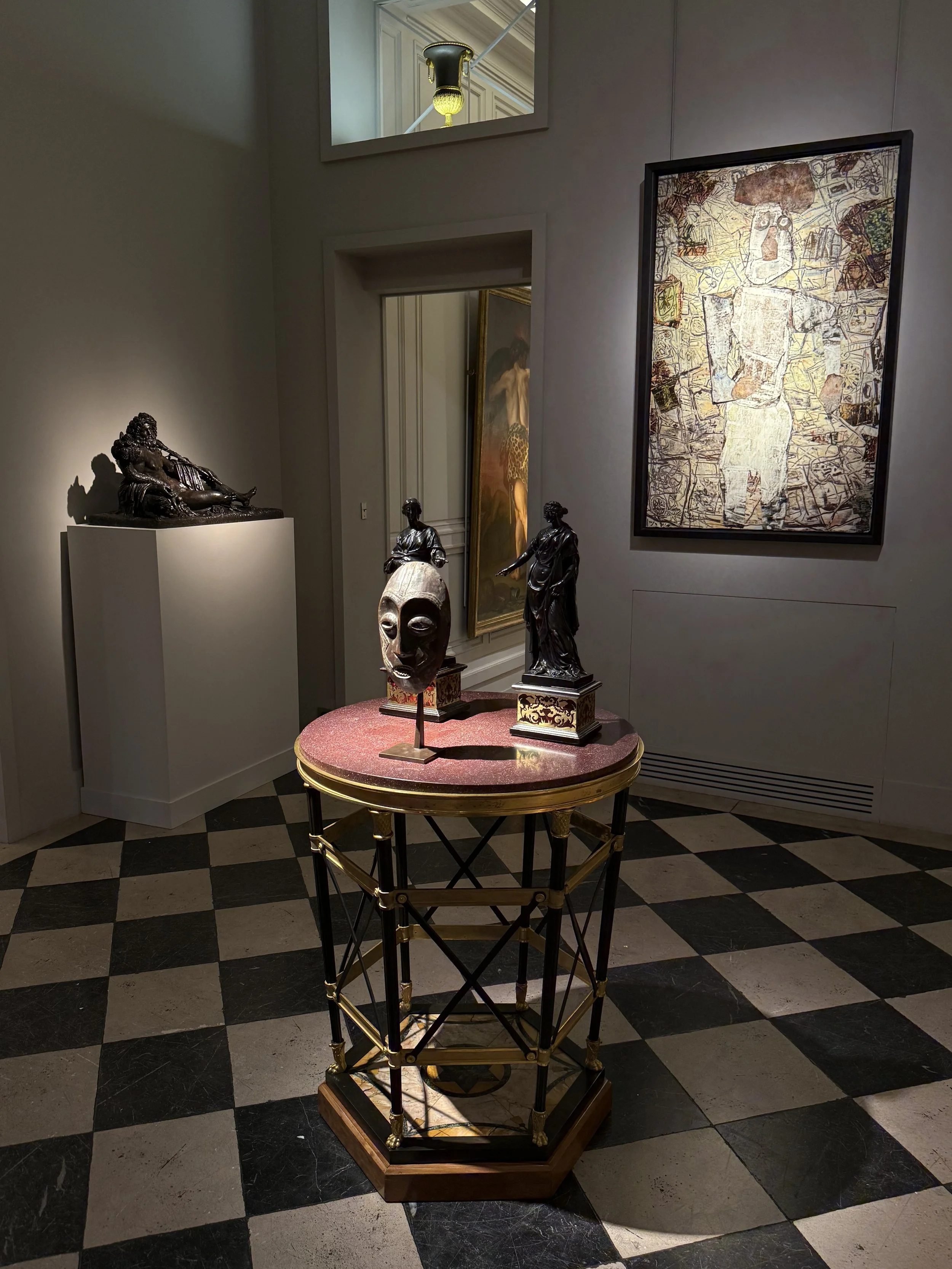
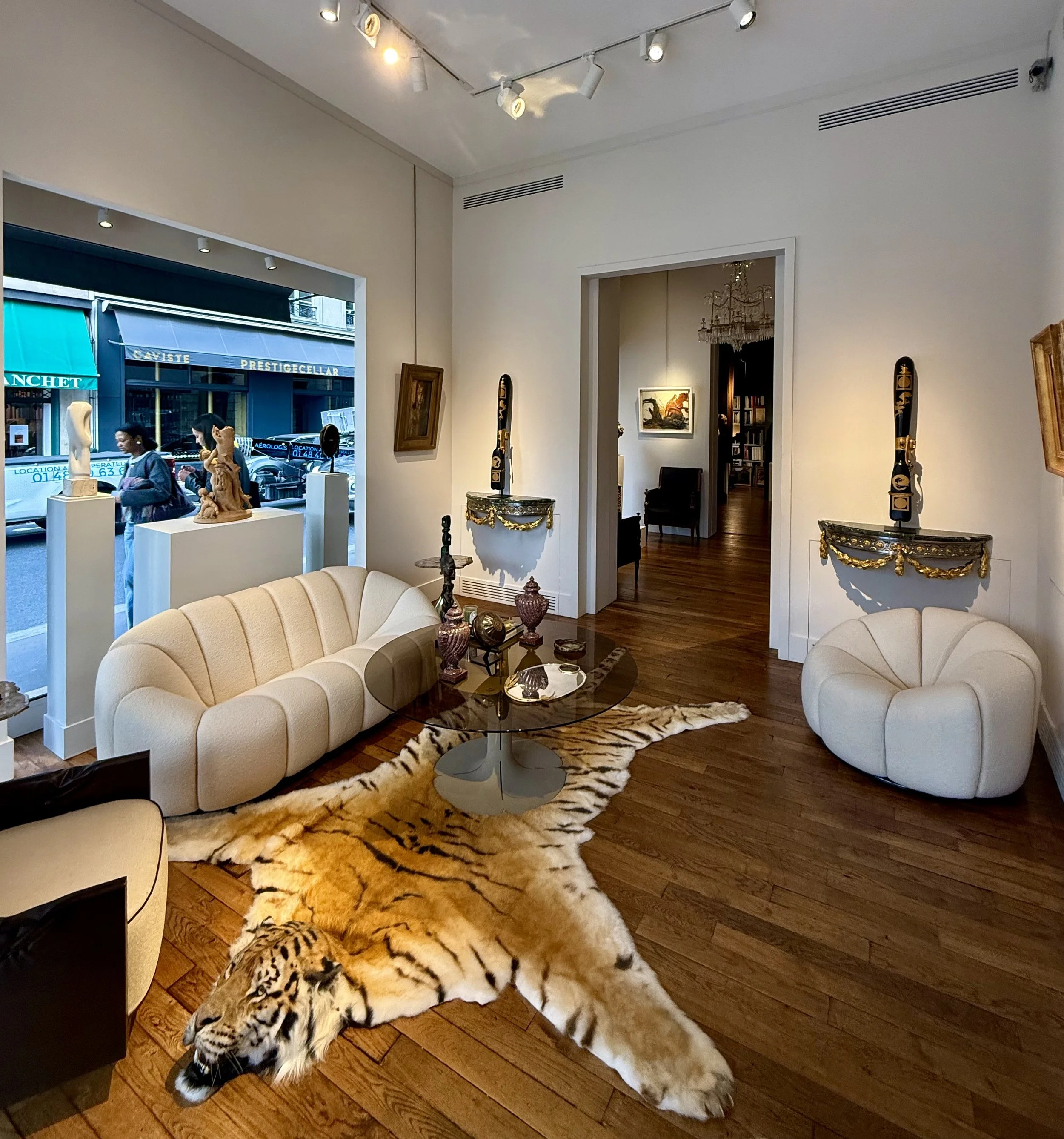

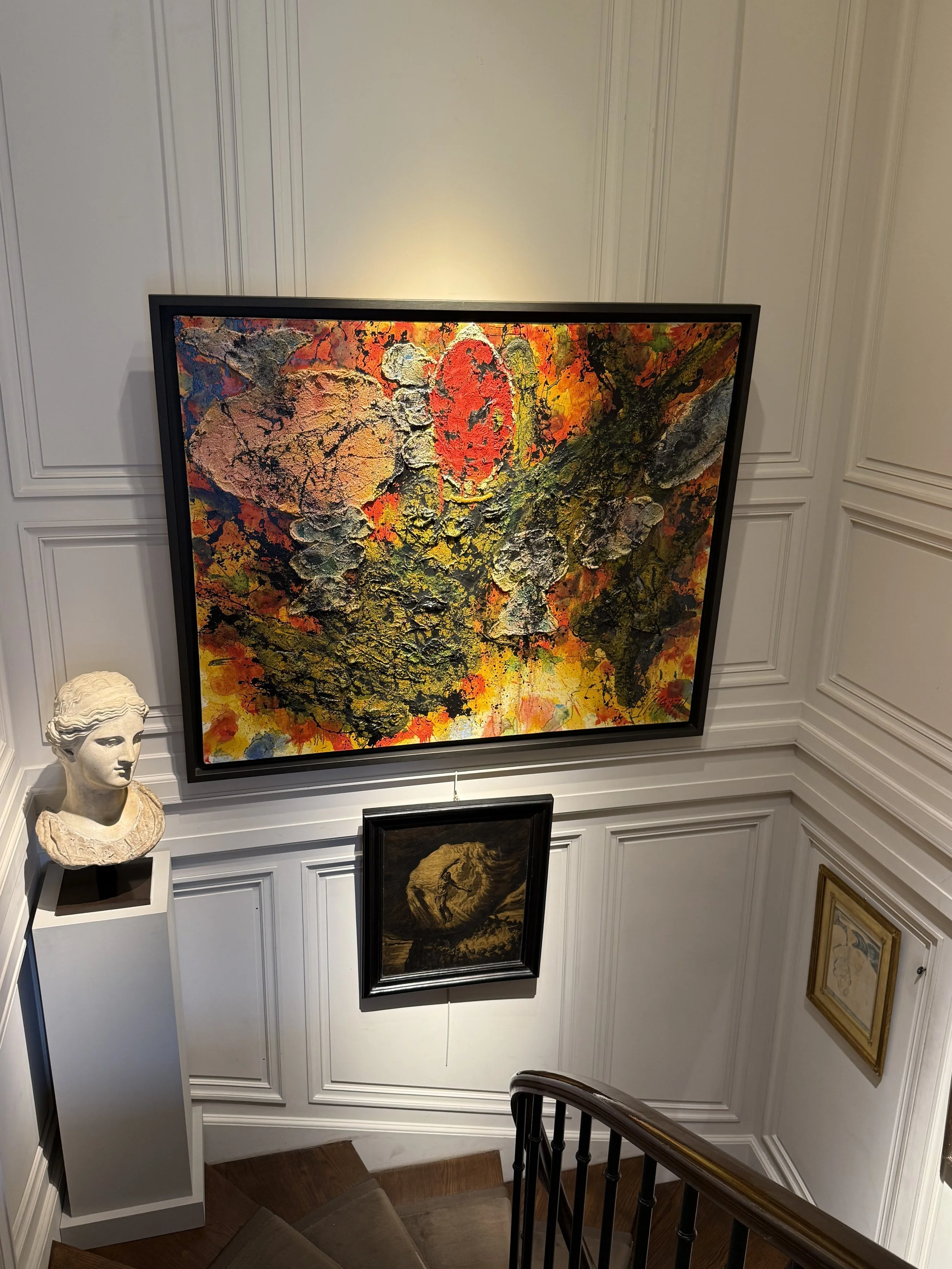


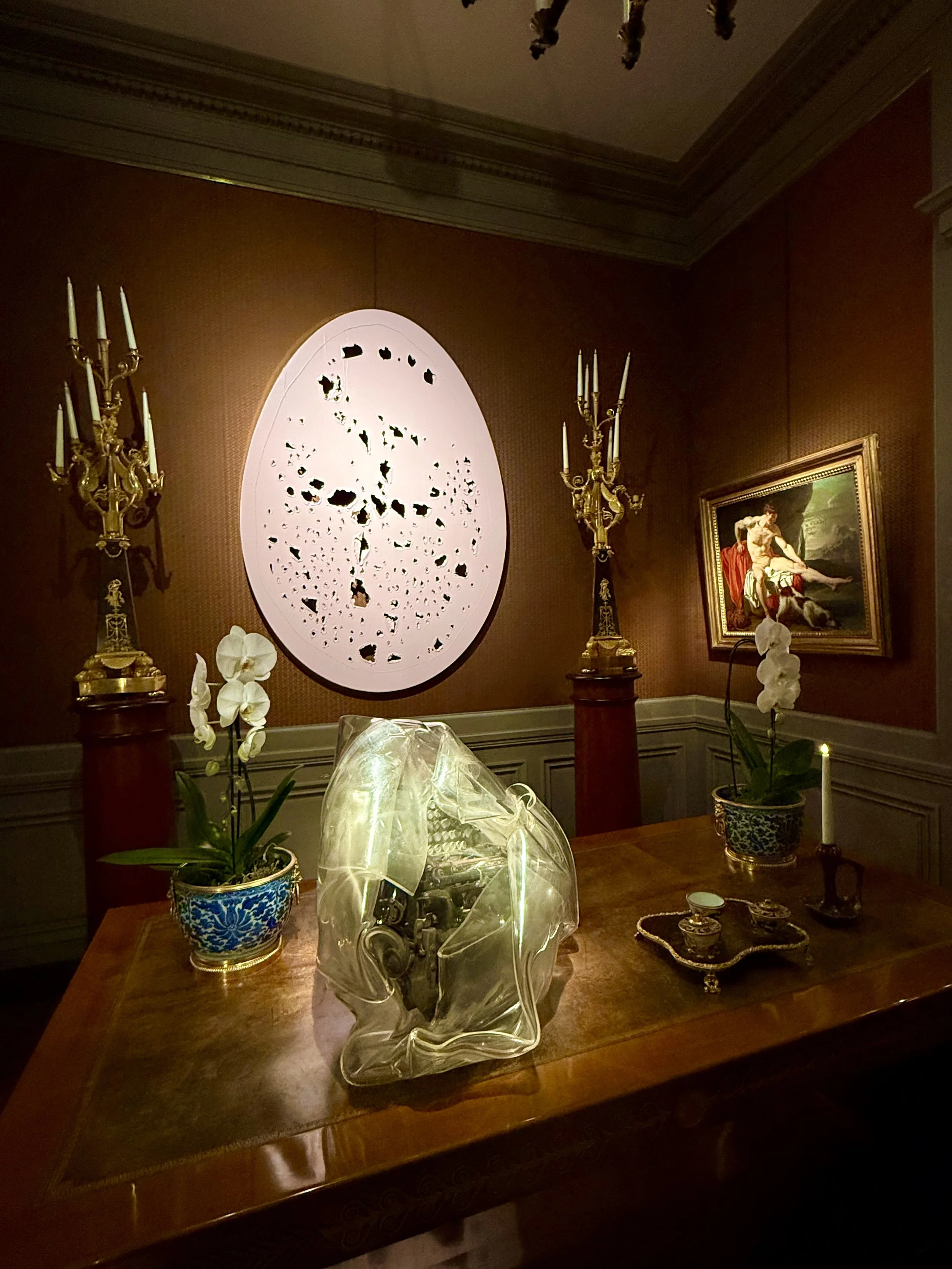
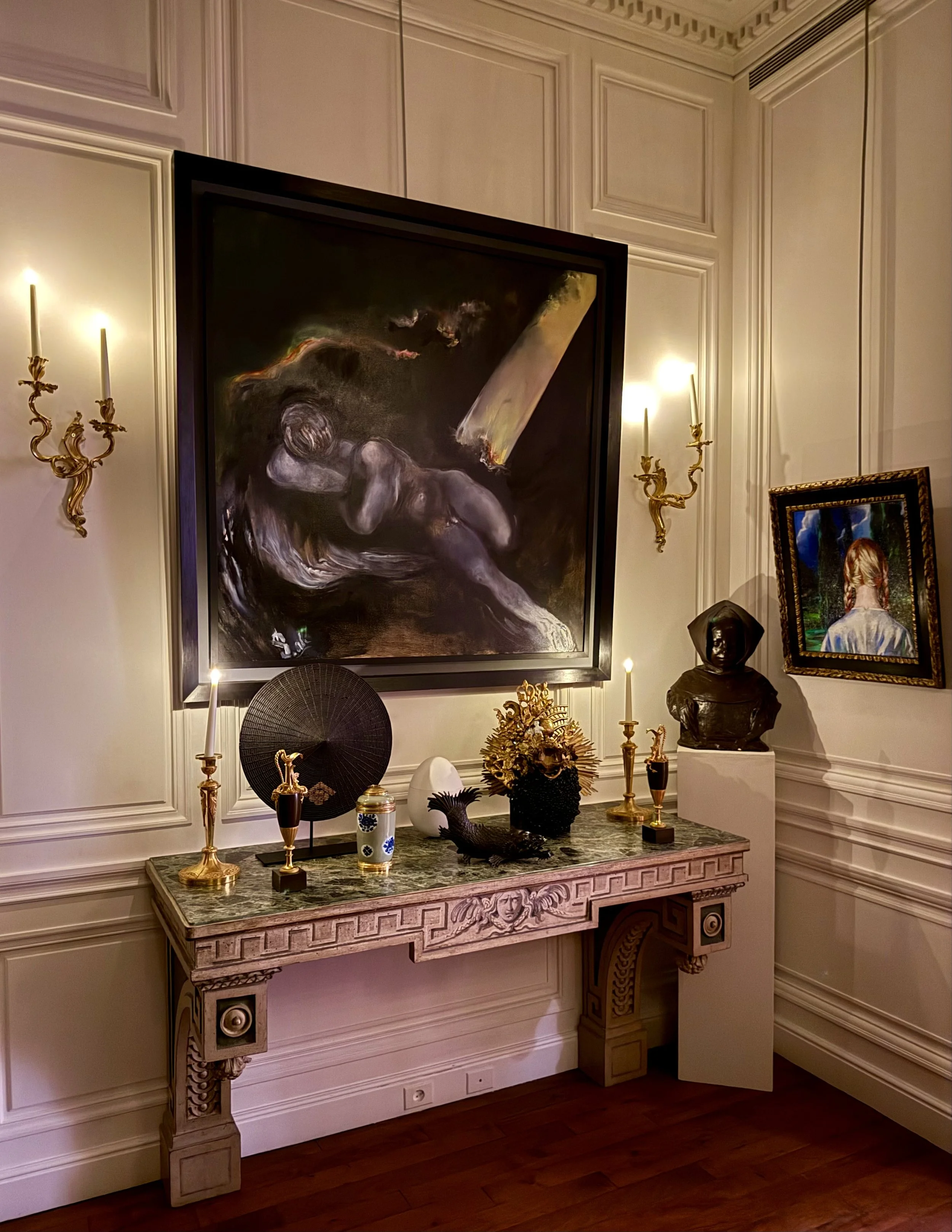
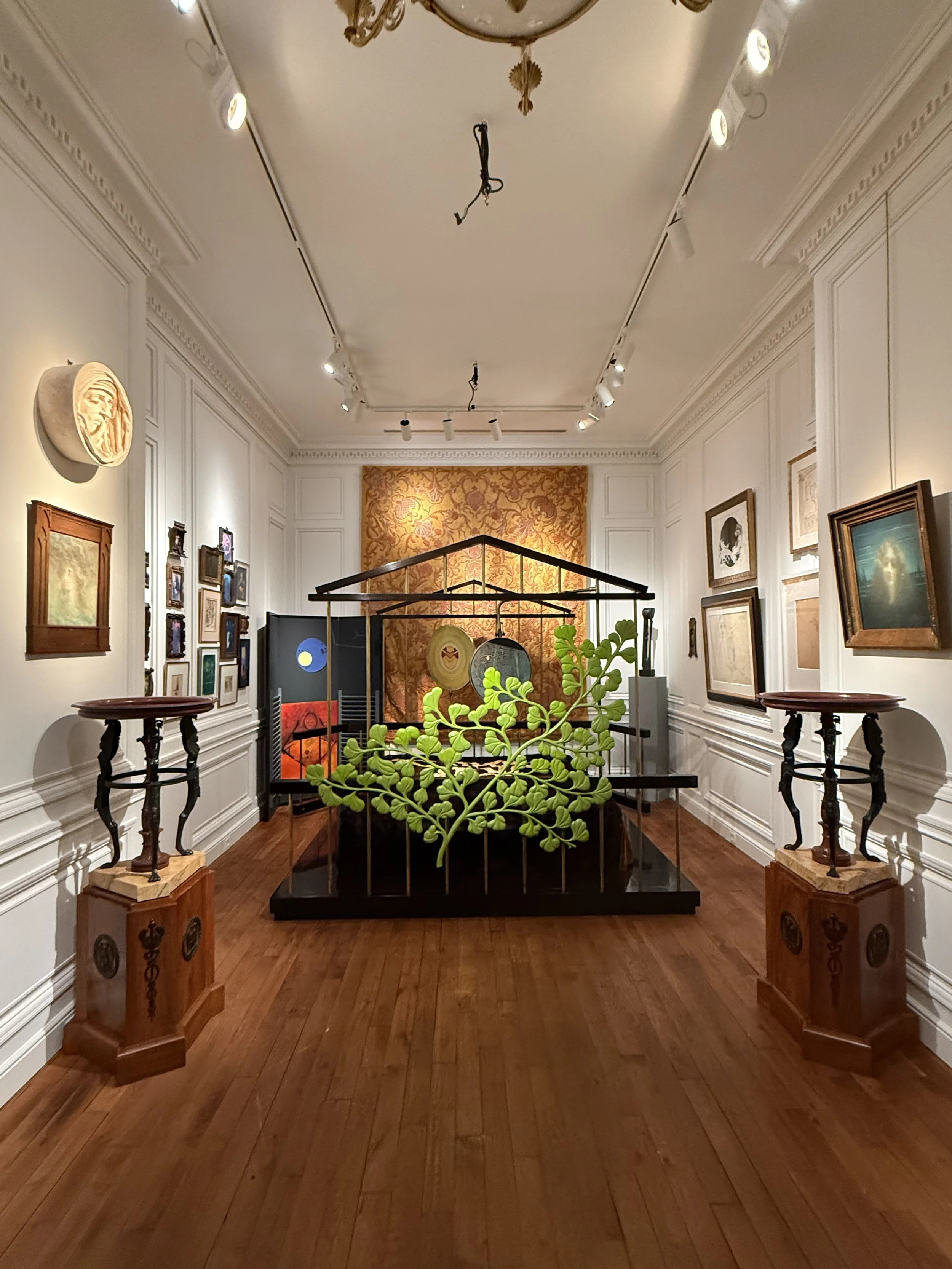

Large Mazarin desk, Louis XIV period, c. 1695–1700 – Globe (from a pair) terrestrial and celestial, Rome, 1644 – Minerva, circle of Joseph Nollekens, England, circa 1775 – Male tau-tau statue, Toraja people, Sulawesi, Indonesia – Daniel Buren, 1983 – Niki de Saint Phalle and Jean Tinguely, 1969. Candlestick (from a pair), after Slodtz, France, Louis XV period - Photo © Tadzio
Photo © Tadzio
Max Ernst, Cage-Bed and Screen, The Great Ignoramus, 1974 – A Presidential Dream in the Form of Poetic Confinement
Created in 1974 at the request of Swiss publisher Pierre Chave, Cage-Bed and Screen, The Great Ignoramus (Lit-cage et son paravent, Le Grand Ignorant) is one of Max Ernst’s most enigmatic works. A tutelary figure of Surrealism, Ernst here blurs the boundaries between sculpture, furniture, and installation — the piece is at once a bed, a mental prison, and a vessel of fantasy.
The work was produced in a limited edition by Modarco in Geneva. One edition was acquired by Nelson Rockefeller, then Vice President under President Gerald Ford, and installed in his official residence in Washington. That version of the surrealist bedroom is now part of the permanent collection of the White House. Another edition is held by the Philadelphia Museum of Art, underscoring the international resonance of this singular creation — a place where art and power converge.
Presented here in an imagined collector’s bedroom, Ernst’s cage-bed and folding screen become the focal point of a disorienting interior world — where the surrealist dream quietly infiltrates the everyday.
Rare Louis XIV console with sphinxes, c. 1700; painting by Antoni Tàpies, 1961; female Dogon sculpture, Mali, 19th century; Ressei-type half-mask (menpō), Japan, 18th century; Hira-jingasa war hat, Japan, 19th century.
Photo @tadzio
Gustave Moreau, The Triumph of Bacchus, circa 1875–76
This oil painting embodies the full symbolic richness of Gustave Moreau (1826–1898). Depicting Bacchus triumphant on a chariot drawn by panthers, the work reflects the artist’s fascination with lush mythologies and allegorical visions.
Endowed with a prestigious provenance — from the Comtesse de Roederer to Georges Wildenstein, before being seized by the Nazis and later recovered from the Altaussee salt mines by the Monuments Men — the painting bears witness to some of the darkest and most compelling chapters in European art history.
Exhibited at Galerie Georges Petit in 1906 and in Tokyo in 1971, it is referenced in all three catalogues raisonnés by Pierre-Louis Mathieu.
A rare pictorial gem, poised between mystery and splendor.




